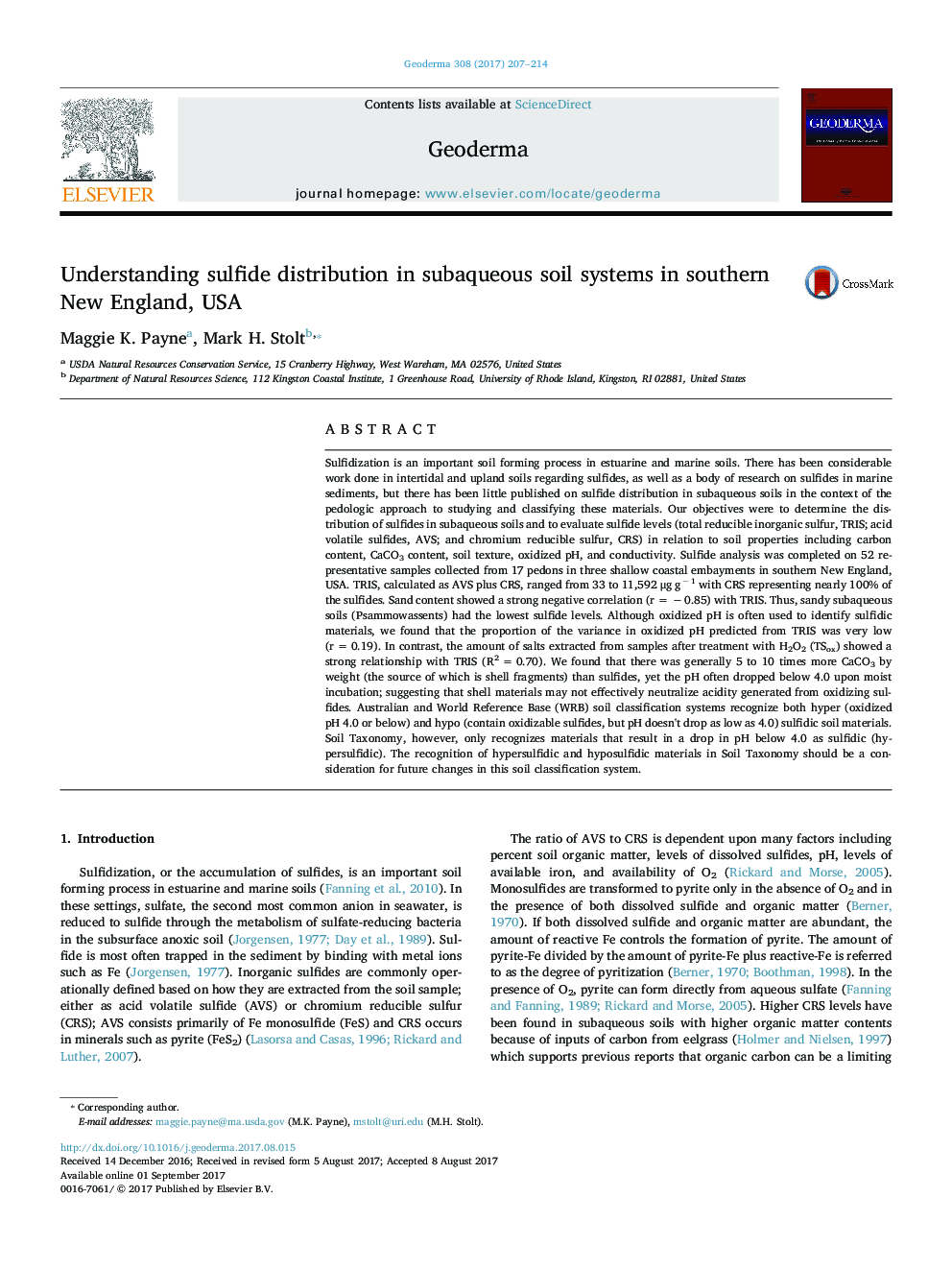| کد مقاله | کد نشریه | سال انتشار | مقاله انگلیسی | نسخه تمام متن |
|---|---|---|---|---|
| 5770564 | 1629409 | 2017 | 8 صفحه PDF | دانلود رایگان |
- CRS is the dominant inorganic sulfide in these estuarine subaqueous soils.
- Subaqueous soil sulfide contents could be estimated by total dissolved solids, carbon, and sand contents.
- Sandy soils (Psammowassents) have lower sulfide concentrations than finer textured subaqueous soils.
- Oxidation pH was influenced by factors other than just sulfide content.
- Soil Taxonomy should separate sulfidic materials into hyposulfidic and hypersulfidic classes.
Sulfidization is an important soil forming process in estuarine and marine soils. There has been considerable work done in intertidal and upland soils regarding sulfides, as well as a body of research on sulfides in marine sediments, but there has been little published on sulfide distribution in subaqueous soils in the context of the pedologic approach to studying and classifying these materials. Our objectives were to determine the distribution of sulfides in subaqueous soils and to evaluate sulfide levels (total reducible inorganic sulfur, TRIS; acid volatile sulfides, AVS; and chromium reducible sulfur, CRS) in relation to soil properties including carbon content, CaCO3 content, soil texture, oxidized pH, and conductivity. Sulfide analysis was completed on 52 representative samples collected from 17 pedons in three shallow coastal embayments in southern New England, USA. TRIS, calculated as AVS plus CRS, ranged from 33 to 11,592 μg gâ 1 with CRS representing nearly 100% of the sulfides. Sand content showed a strong negative correlation (r = â 0.85) with TRIS. Thus, sandy subaqueous soils (Psammowassents) had the lowest sulfide levels. Although oxidized pH is often used to identify sulfidic materials, we found that the proportion of the variance in oxidized pH predicted from TRIS was very low (r = 0.19). In contrast, the amount of salts extracted from samples after treatment with H2O2 (TSox) showed a strong relationship with TRIS (R2 = 0.70). We found that there was generally 5 to 10 times more CaCO3 by weight (the source of which is shell fragments) than sulfides, yet the pH often dropped below 4.0 upon moist incubation; suggesting that shell materials may not effectively neutralize acidity generated from oxidizing sulfides. Australian and World Reference Base (WRB) soil classification systems recognize both hyper (oxidized pH 4.0 or below) and hypo (contain oxidizable sulfides, but pH doesn't drop as low as 4.0) sulfidic soil materials. Soil Taxonomy, however, only recognizes materials that result in a drop in pH below 4.0 as sulfidic (hypersulfidic). The recognition of hypersulfidic and hyposulfidic materials in Soil Taxonomy should be a consideration for future changes in this soil classification system.
Journal: Geoderma - Volume 308, 15 December 2017, Pages 207-214
